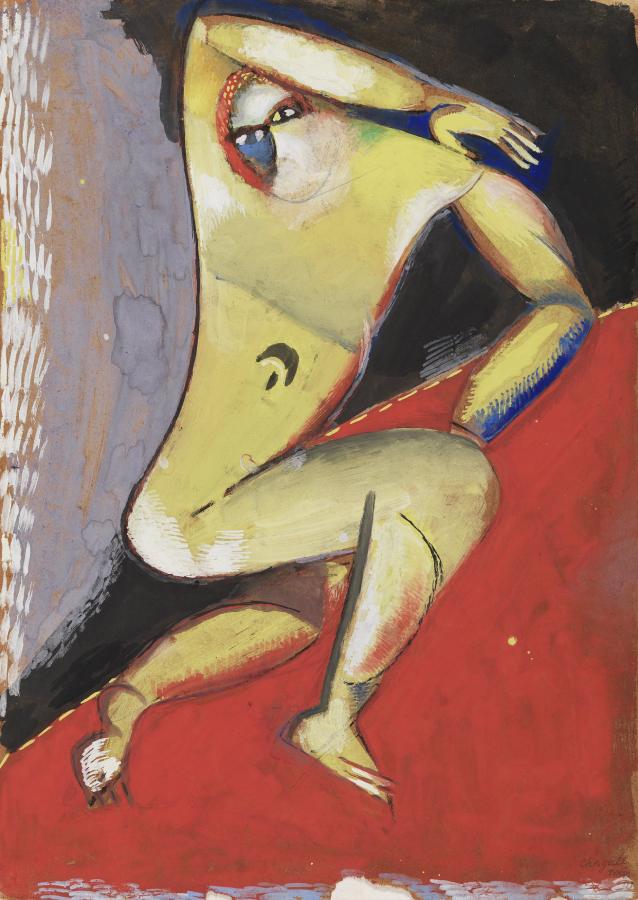Chagall, Marc (1887-1985)
Nu (Nude)
1913
Gouache on paper, 34 x 24 cm
Museo Thyssen-Bornemisza, Madrid
Marc Chagall first lived in Paris from 1911 to 1914 and it was there that he painted the present Nude in the Thyssen-Bornemisza collection. The painter arrived in the French capital with Leon Bakst, his teacher in Saint Petersburg, and, as he himself recounts, was immediately fascinated by French art. “Bakst turned my life in another direction, ” Chagall wrote, “I will never forget this man. He invited me to go with him to Paris as his assistant in 1911, but once there we parted company and I ended up mixing with contemporary European artists. Standing in the Louvre before Manet’s Olympia, Courbet and Delacroix, I understood what Russian art and the West was all about. I was captivated by French painting’s sense of measure and taste.”
The young painter, who hailed from the distant, provincial Jewish town of Vitebsk, tried to make a name for himself in what was then the capital of art. He struck up friendships with the painters Fernand Léger, Amedeo Modigliani and Chaïm Soutine and the poets André Salmon, Max Jacob and Guillaume Apollinaire. In 1913 he managed to exhibit his work at the Salon des Indépendants and took part in the Erster Deutscher Herbstsalon organised by Herwarth Walden in Der Sturm, his Berlin gallery, which staged a one-man show of Chagall the following year. The year 1913 is also inscribed on the present gouache alongside the painter’s signature, though some authors believe that, as with most of his works, it was most likely added at a later date.
Also in 1913, The Rites of Spring, the first truly experimental production of Diaghilev’s Ballets Russes, premiered in Paris in the month of May, bringing together two great innovators of music and dance, Stravinsky and Nijinsky. Chagall’s relationship with Bakst, who collaborated with the Ballets Russes, has led this Nude to be linked to the figure of Nijinsky, the company’s undisputed star whom Chagall, according to his memoirs, had met at the Zventseva art school in Saint Petersburg before going to Paris. Nijinsky introduced major choreographic innovations that revolutionized the academic conventions of ballet, and of which this dislocated figure might be regarded as an exact pictorial equivalent.
As may be appreciated in this small gouache, in the French capital Chagall steeped himself in European art trends, while retaining some of the primitivism and naïveté of Russian folk tradition. The geometry and dislocation of this naked male body come close to Cubism, while the vibrant colours recall Fauve painting. Furthermore, although Chagall never managed to shed the fetters of his Jewish origins, which are ever present in his work, his chief aim when deciding to take up painting had been to free himself from the tradition of Hasidic Judaism, which considered it a sacrilege to represent images of man. Perhaps for this reason Chagall remained a figurative artist and, unlike most of his fellow Russians, never explored abstraction. The work’s first owner was Ida Bienert, a resident of Dresden, who became one of the main collectors of modern art in Germany of the 1920s.
Paloma Alarcó (T-B)
